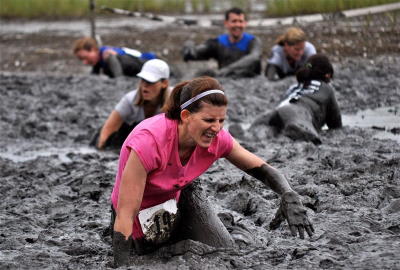HouseBoy
Structural
- Nov 21, 2005
- 464
I'm working with a geotechnical engineer's recommendation for helical piers to be extended thru a very soft layer of soil to reach bearing (rated by the torque) at a much greater depth. Boring logs indicate the sampler dropped under its own weight (140 lbs) 12 ft and 15 ft in the two boring holes. The helical pier installer did a test pier that reach 47 to 50 feet before reaching the target bearing capacity. 30k is the design load (unfactored D+L) and the "Practical Load Limit" for the test pier is listed by the installer as 80k.
Borings were terminated at 20 and 30 ft.
I'm wondering about the pier shaft acting like a slender column thru the 12 and 15 ft zones of soft soils.
Shaft is 2 7/8" diam 0.262" wall thickness. Seems marginal for slenderness.
I have a few messages in to the soils engineer but have not heard back in a couple of weeks. Maybe he was on vacation or he's very busy..... I'm just trying to get some background info on this deep and slender component.
Project is a single family residence located in Northern Michigan so snow is a big number (i.e. not a dead load). I estimate DL/LL are about even contributors to the design load (wood frame house with crawl space foundation throughout. Most of the pier loads will be 25 to 30k.
I'm just thinking that when the boring probe can drop under its own weight, then the bracing effect of the surrounding soil might not be that much. Any research on this or good references for this particular aspect?
Borings were terminated at 20 and 30 ft.
I'm wondering about the pier shaft acting like a slender column thru the 12 and 15 ft zones of soft soils.
Shaft is 2 7/8" diam 0.262" wall thickness. Seems marginal for slenderness.
I have a few messages in to the soils engineer but have not heard back in a couple of weeks. Maybe he was on vacation or he's very busy..... I'm just trying to get some background info on this deep and slender component.
Project is a single family residence located in Northern Michigan so snow is a big number (i.e. not a dead load). I estimate DL/LL are about even contributors to the design load (wood frame house with crawl space foundation throughout. Most of the pier loads will be 25 to 30k.
I'm just thinking that when the boring probe can drop under its own weight, then the bracing effect of the surrounding soil might not be that much. Any research on this or good references for this particular aspect?


![[idea] [idea] [idea]](/data/assets/smilies/idea.gif)